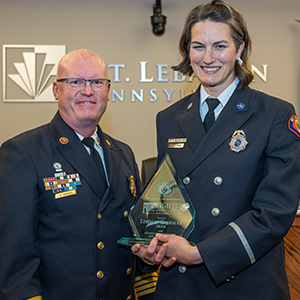50 years of home rule in Mt. Lebanon

own at the bottom of our green “Welcome to Mt. Lebanon Pennsylvania” signs, adorned with the quintessential Cedar of Lebanon tree, in letters so small you can be excused for missing them, are the words “a home rule community.” Those who do notice may wonder: What exactly does that mean?
The Pennsylvania Department of Community and Economic Development defines home rule authority as the “basic authority to act in municipal affairs from state law.” In 1968, newly passed legislation essentially declared a home rule community can make its own rules — except where state law says it can’t.
Since then, 79 municipalities adopted home rule charters, including Mt. Lebanon in 1974. According to the Historical Society of Mount Lebanon, Mt. Lebanon was one of the first communities in Pennsylvania to make the switch from township to municipality under home rule, yet much of Mt. Lebanon’s charter follows first class township code.
According to a 2013 report from Mt. Lebanon’s Ad Hoc Home Rule Charter Study Committee, the home rule charter regulates who can run for commissioner, how the commission will function and the structures and responsibilities of other appointed staff members.
Assistant municipal manager/planner Ian McMeans appreciates the flexibility in a home rule charter, as it gives the municipality direct power to implement changes that benefit residents.
“I feel like local government has the most direct measurable impact on your day-to-day life,” McMeans said. “It gives Mt. Lebanon residents control and a voice in how their government is structured and how their government operates.”
Every Pennsylvanian lives within two local government entities — a county and a municipal corporation. Counties are required to provide services such as transportation, social services and the coordination of elections. Most counties are governed with a board of county commissioners, but Allegheny County has a county executive and a 15-member council. Allegheny County has 130 self-governing municipalities, more than any other Pennsylvania county.
Pennsylvania has 56 cities, grouped into four classes. Philadelphia, Pittsburgh and Scranton are unique because they are the only cities in their class — first class, second class and second class A, respectively. The other 53 are considered third-class cities. Clairton, Duquesne and McKeesport are Allegheny County’s third-class cities.
Taking it to a more technical, local level: Mt. Lebanon is a municipality, not a township, under home rule authority.
While Mt. Lebanon is governed by a home rule charter, it functions like a township because it is divided into wards with a five-member commission instead of a mayor and other elected officials.
The Commission appoints a manager to run the day-to-day operations of the municipality.
Allegheny County has more boroughs than any other form of local government. Boroughs have a strong council, which makes most of the governing decisions; a weak mayor, who typically presides over council but has limited power, and a few other elected officials. The mayor, council members and tax collectors of a borough are elected for four-year terms. Even though boroughs are quite popular here, McMeans says the setup can make it harder to make changes.
“In recent years, a lot of the home rule charter changes in Mt. Lebanon have been made through a simple question on the ballot,” he said. “But there [are] rules in the statewide township code, [or] the statewide borough code, that can hinder how townships and boroughs operate, and it’s a lot harder to change those.”
Although Mt. Lebanon’s home rule charter can be confusing at face value, McMeans said it allows the community to keep up with the times, with the flexibility to amend the budget and new offices.
“For example, we didn’t have an IT office in 1972 because we didn’t need it at the time. But as technology changed, some municipal manager along the way said we really need IT staff to help support the functions of our government,” McMeans explained.
“I think it’s really neat in the way it allows for flexibility of the municipal manager … without having to go through big amendments to the code to change things.”





